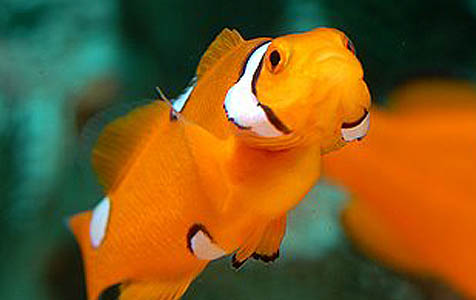
A highly deformed Percula Clownfish; fishes like these are routinely culled by breeders. But will that always be the case?
The other day I was visiting a local Florida fish shop and came across these Percula Clownfish. They had been captive-raised by a local aquarist and brought to the fish shop with great pride.
As I watched them writhe in a tight group amidst a fake turquoise coral, I started to wonder if there was room in the hobby for such aberrant or mutant fish. After all, Picasso Clowns, Onyx Clowns, and so-called Naked Clowns have all earned a place in the hobby. Would a fish with a contorted, doll-like head or missing vertebrae make a good pet if it somehow looked different from all the rest?
Culling Thoughts
I have always been a big advocate of culling. Any offspring with obvious morphological deformations such as missing gill covers, twisted vertebrae, smushed mouths and disfigured heads were to be destroyed.
The future of captive raised marine aquarium fishes in the industry is quite dependent on producing high quality offspring exhibiting every characteristic that makes the species desirable- or at least I thought. In the early days of captive breeding clownfish often looked like bull dogs and deformities were common. Colors were bland and it was hard for fledgling companies to compete against wild caught fish.
Over the years, however, we have learned significantly that nutrition and water quality can lead to a superior product that is healthier and infinitely more marketable than wild-caught specimens. If deformed fish begin to enter the marketplace more frequently will it affect the good name and future sale of captive raised fish or will it actually become a more desirable product?
Consumers Vote
As I pondered these questions I went back to the fish shop to take another look and every single one was sold to a new home. In the tank directly next to the mutant fish were normal looking Ocellaris Clownfish with no deformities and three perfect stripes.
Sadly, to me at least, it seemed these may have been too common, maybe even boring, as every one was still there bobbing up and down begging for a home. We have seen deformities become highly marketable in the freshwater aquarium trade. It is inevitable that they will invade the marine hobby?





Were the “mutants” selling for less? Unfortunately many marine hobbyists want the cheapest fishes available 🙁